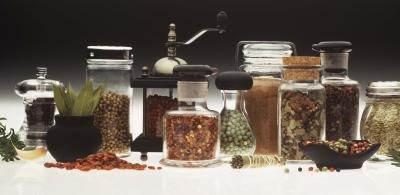In general, breastfeeding mothers can eat a normal diet without any specific eliminations. However, it is possible that some babies may be more sensitive to certain items in the mother's diet. Also, some babies may have allergic reactions as a result of certain food components passed on through the breast milk.
Food Sensitivities
Some babies may have sensitivities to certain foods. Symptoms of a food sensitivity include fussiness after feedings, inconsolable crying and trouble sleeping comfortably. Food sensitivity symptoms may occur anywhere from 4 to 24 hours after the baby has been exposed to the food through breast milk.
Food Allergens
Mothers who have a family history of food allergies may want to avoid eating foods which have caused other family members to have allergic reactions. Cow's milk and peanuts are two of the most common food allergens. Other possible allergens include wheat, eggs, corn, soy and fish. An allergic reaction may cause the baby to develop a rash, hives, breathing difficulties, ear infections or stomach upset.
Gassy Foods
Certain foods produce gas that may cause breastfed babies discomfort. Breastfeeding mothers who have extremely fussy babies may want to eliminate these foods from their diet. These foods include turnips, peppers, cucumbers, Brussels sprouts, cauliflower, onion, cabbage, broccoli and garlic.
Citris Fruits
Citrus foods may also irritate a breastfed baby. Breastfeeding mothers may want to avoid tangerines, limes, oranges, lemons and grapefruits.
Chocolate
The chemical theobromine is present in chocolate. This chemical may lead to diarrhea and fussiness in breastfed babies.

















